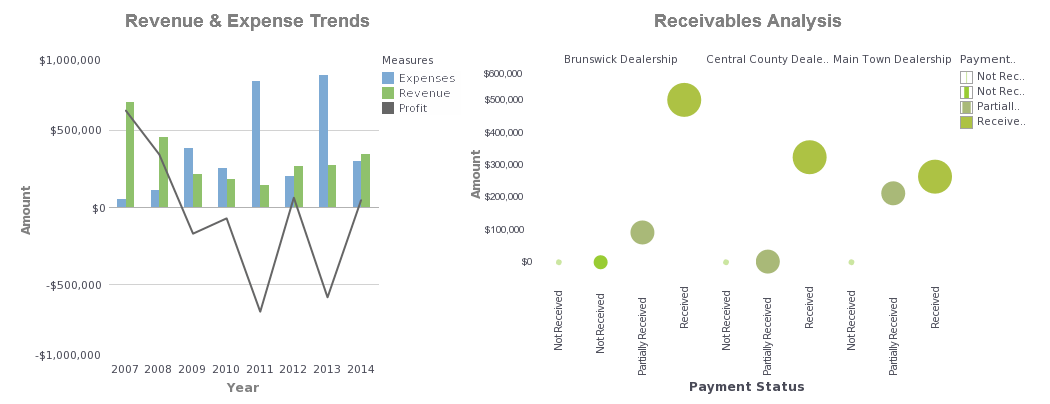InetSoft Webinar: Dashboards Are Critically Important for the CFO
This is the continuation of the transcript of a Webinar hosted by InetSoft on the topic of "Improving Corporate Performance Management." The speaker is Abhishek Gupta, product manager at InetSoft.
There needs to be one version of the truth, one harmonized and integrated view of both internal data as well as access to external data. Being able to deliver mobile decision support in a role-specific way is another.
Dashboards are critically important for the CFO and all CXOs, in fact, but the dashboard the CFO needs is quite different from what the head of operations and the head of sales needs.
It is quite different from what the CEO needs and on and on it goes all the way down to the front-line manager. So being able to present that one view with the truth in a role-specific way, specially optimized for mobile devices because we are talking about moving that decision from the boardroom all the way to the edge of the organization, having that role specific in presentation layer if you will is essential and critical.
| #1 Ranking: Read how InetSoft was rated #1 for user adoption in G2's user survey-based index | Read More |
Being able to process or rewrite existing BI apps for mobile, again you can see that the leaders really trump followers in this regard. And there are reasons for that, because there is institutional knowledge that is embodied in the creation of report. So the ability to access those now are from all points, both mobile, desktop and anywhere else is becoming essential, and the leaders know that making the data as agile as the device, if you will, is the part of what makes a leader.
Ultimately we want to include the notion that when you consider mobility based upon your business model, based upon your regional spread, think about that sometimes your workers may need access to this critical information when they are not within a wireless signal. For example, it could be yourself as CFO, perhaps. You need to pull a report while you are with a client on the golf course, or you may be traveling in a remote region if you are a global organization.
Even your front-line employees may be going in and out of signal, so having a consideration that mobile is about connectivity, but it also needs to be to be handle what happens when you are not in connectivity and how do you automatically synchronize that data when you are back in signal so that again you have one version of the truth. If you can build this stack of synchronized or harmonized data with the role-specific use, the ability to access historical reports as well as new reports optimized for mobile, and then being able to access them offline, you are on the path that we are recommending here.
If you ask any CFO what he or she wants from a business intelligence standpoint, the answer is going to be having every bit of data migrating in real time, onto a dashboard, on their tablets, or smart phone. It’s kind of like what that story with a customer who had an issue, and it was taken care of while in the restaurant. So what is the problem with having that become a reality. We have this more source of intelligence, BI, residing in these different technologies, and different systems, is there a way to aggregate it, seamlessly, maybe with even, a red, yellow, and green light kind of structure to give CFOs what they want?
 |
Read the top 10 reasons for selecting InetSoft as your BI partner. |
Yes, with our data mashup engine, you have then the ability to bring some existing kind of BI consoles and dashboards together and have them available on your mobile device, on iPads, or iPhones, but what ends up being still tricky is with so many systems in the enterprise, a lot of companies really just don’t have a good kind of handle on their data in general.
There is a lot of data at rest in places, a lot of technology hasn’t been leveraged, yet. The reality right now for most companies is they have a workforce that’s spread across multiple devices and in many cases multiple offerings to share and save file, so your DropBox, SkyDrive, Google Drive things along those lines. You look at Evernote, and things that pop up there, too. Those are all services the employees have gone for or individual groups have gone for.
So there really needs to be some kind of dictated set of applications, or at least some kind of standard that it has been worked towards to be able to say if we have a new tool, we can still make sure that we are getting good data from it and we are able to not only just get that, but easily have that manipulated and be able to maneuver with that, too.
| Previous: Best Practices for Mobile Business Analytics |


